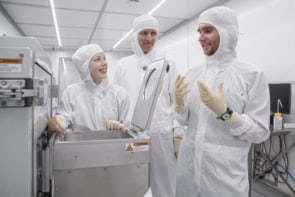The International Gamma-Ray Astrophysics Laboratory - INTEGRAL for short - was launched from Baikonur in Kazakhstan earlier today. The observatory will be able to detect high-energy gamma-ray photons from a variety of astrophysical sources such as supernovae, black holes, neutron stars and gamma-ray bursts. INTEGRAL will be placed into a highly eccentric 72-hour orbit and will spend most of its time at altitudes in excess of 40000 kilometres, well beyond the Earth’s radiation belts.
Gamma rays provide information about physical processes within regions of the universe that do not emit radiation at radio, visible or X-ray wavelengths. However, gamma-ray photons are absorbed by the Earth’s atmosphere, so astronomers must put their telescopes into space to detect them.
A number of previous space-based telescopes – including NASA’s Compton Gamma Ray Observatory – have carried out gamma-ray astronomy but INTEGRAL will be the most sensitive gamma-ray telescope ever launched. And weighing in at more than four tonnes, INTEGRAL’s scientific payload is the heaviest ever launched by the agency. It was launched on board a Russian PROTON rocket.
INTEGRAL will exploit its greater sensitivity and higher angular and energy resolutions to make detailed studies of the most interesting sources discovered by Compton. Its two main instruments – the IBIS imager and the SPI spectrometer – will image gamma-ray sources and measure their spectra, while an X-ray monitor and an optical camera will help to identify these sources. The nominal lifetime of the observatory will be two years with a possible extension to up to five years.
INTEGRAL will be followed by two major gamma-ray missions to be launched by NASA over the next three years. SWIFT will focus on gamma-ray bursts when it takes off next year, while the larger GLAST mission – which is scheduled for launch in 2005 – will concentrate on the most energetic gamma-rays observed by the Compton mission, which finished two years ago. All these missions, combined with a new generation of ground-based gamma-ray telescopes, will give astronomers a much improved view of the high-energy universe.



